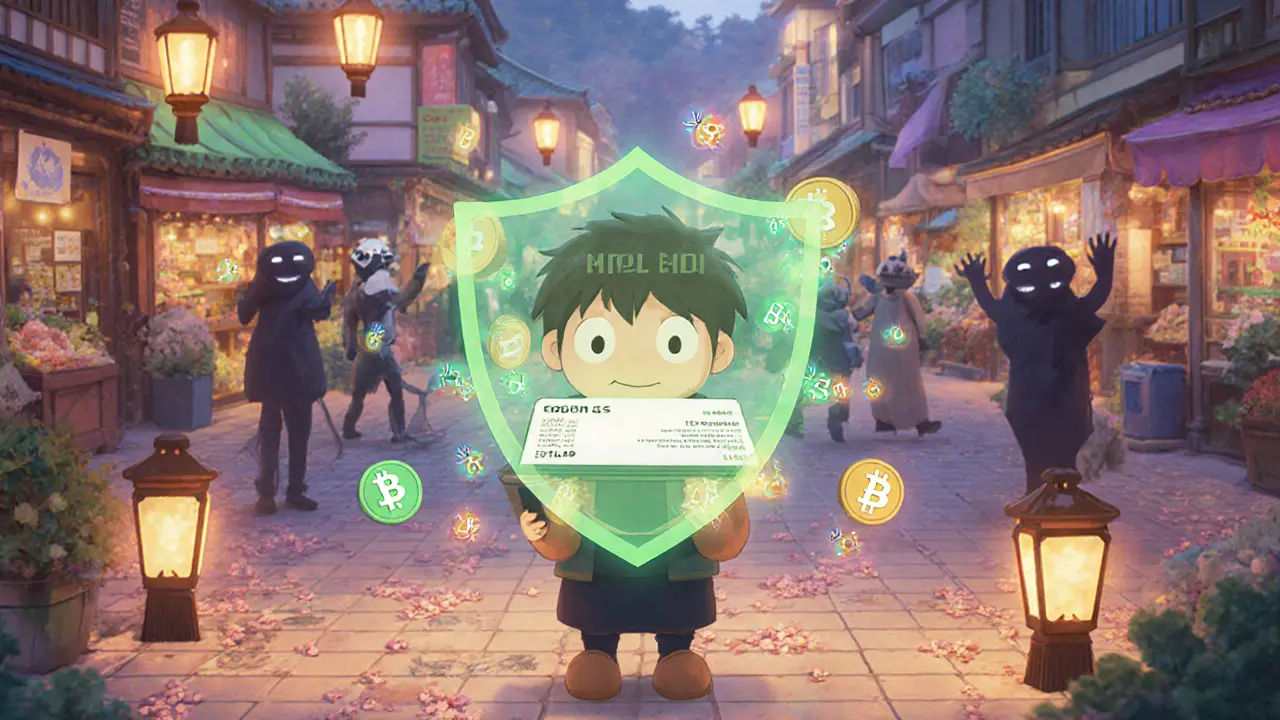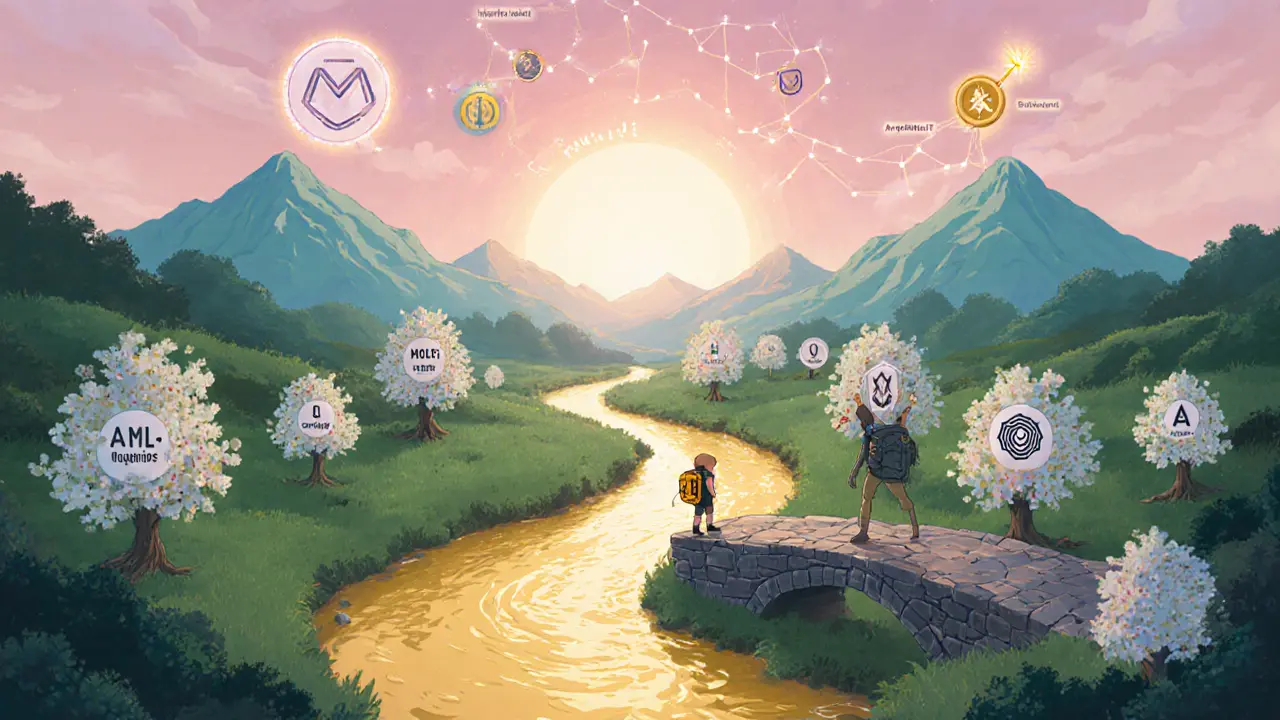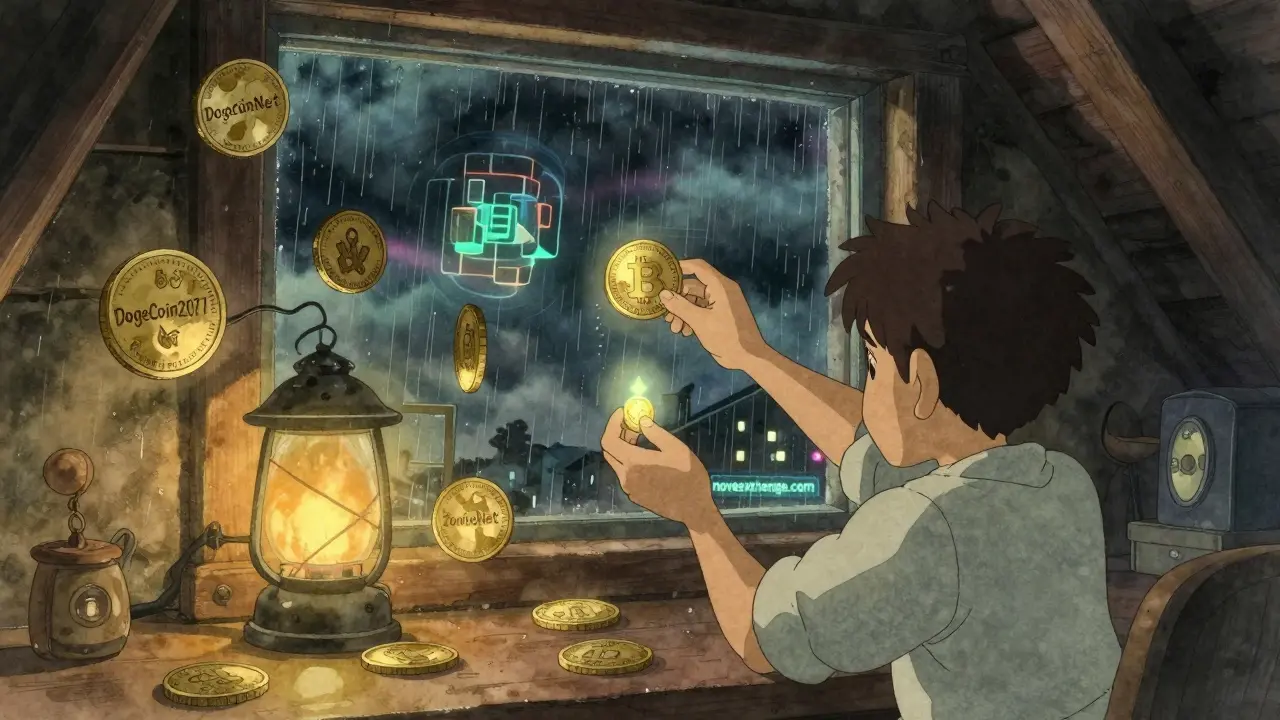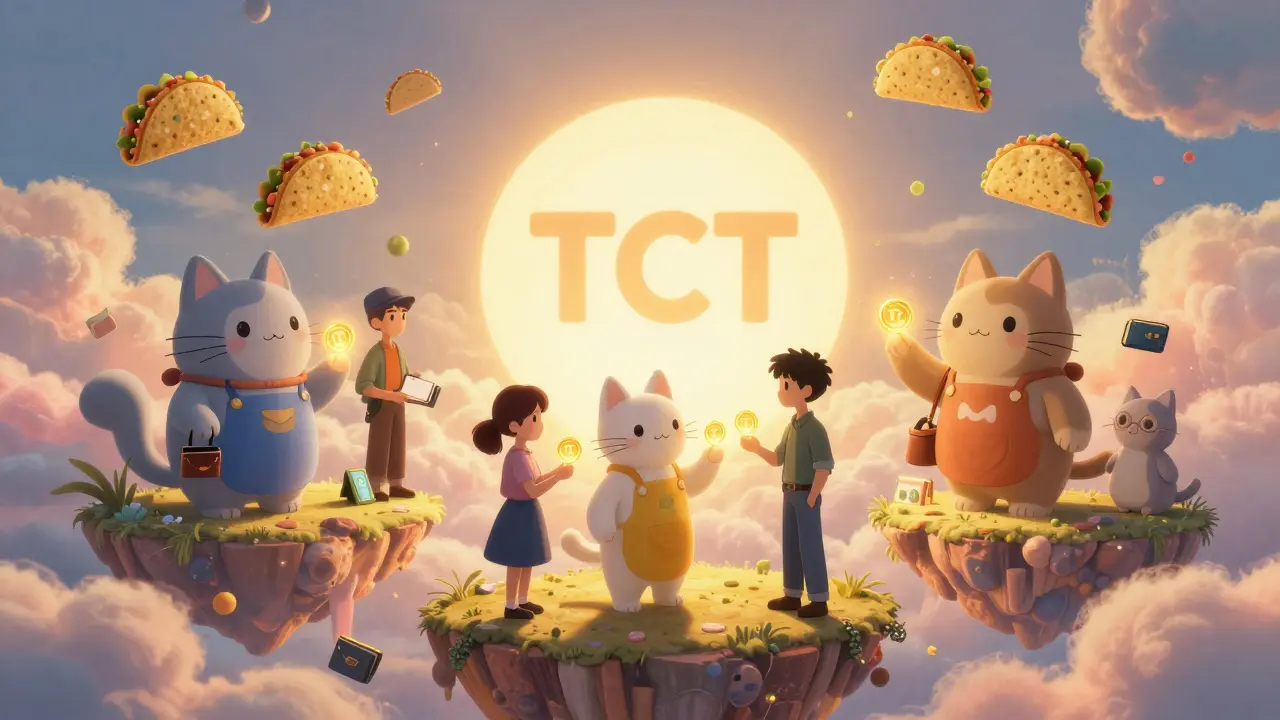Molten (MOLTEN) Gas Fee Calculator
Transaction Parameters
Quick Summary
- Molten (MOLTEN) is a Layer3 network built on the Arbitrum Orbit stack and uses Celestia for data availability.
- It targets traders by offering sub‑penny transaction costs - up to 100× cheaper than typical rollups.
- Native account abstraction lets users pay gas with any token, removing the need for ETH.
- Built‑in Oracle Extractable Value (OEV) protection prevents front‑running on on‑chain oracles.
- Token trades around $0.30 with modest daily volume; adoption is still early.
What is Molten (MOLTEN)?
Molten (MOLTEN) is a Layer3 blockchain solution that launched its mainnet on 31March2024. Developed by the UniDex team, it runs on the Arbitrum Orbit stack and leverages Celestia for data availability. The network’s core promise is to give traders a blockchain that is both ultra‑cheap and safe from OEV attacks, while still inheriting Ethereum’s security guarantees.
Because it sits one layer above a rollup (hence “Layer3”), Molten can specialize its consensus and sequencing logic for high‑frequency trading without re‑inventing the base security model that Ethereum provides.
Technical Architecture at a Glance
The stack can be broken down into three main pillars:
- Rollup Infrastructure: Molten re‑uses the Arbitrum codebase, which means it is fully EVM‑compatible. Any smart contract written for Ethereum can be deployed unchanged.
- Data Availability Layer: Instead of storing data on‑chain, Molten outsources it to Celestia. This modular approach separates consensus from storage, reducing costs and improving scalability.
- Sequencing & Security: The network runs the Espresso TEE sequencer, added on 30January2025. It creates blocks inside a trusted execution environment, then posts proofs to Celestia via Blobstream. Fraud proofs are used for state validation, although the system currently has a limited challenger set.
Two standout features emerge from this design:
- Native Account Abstraction - users can pay gas in any token, even the one they are swapping, eliminating the need to hold ETH.
- Built‑in OEV Protection - protocols can call price oracles on‑chain without exposing themselves to front‑running, which translates into higher yields for liquidity providers.
Token Economics and Market Snapshot
The MOLTEN token (contract0x66e535e8d2ebf13f49f3d49e5c50395a97c137b1) powers gas payments and governance. Sources disagree on total supply - CoinGecko lists 2.7million tokens, while Liquidity Finder reports 4million, with zero tokens officially in circulation.
As of the latest data (30Sept2025):
- Price: ≈$0.30 per token.
- 24‑hour volume: $18,622.
- 7‑day price change: +20.8%.
- Key trading pairs: MOLTEN/WETH on UniswapV3 (Base) accounts for 42% of the total DEX volume.
Liquidity is spread across more than 60 markets, but daily trading activity remains modest compared with established assets - a typical sign of an early‑stage Layer3 chain.
Why Gas Fees Are So Low
Molten’s fee model hinges on three mechanisms:
- Data availability on Celestia - off‑chain storage cuts the cost of publishing transaction data.
- TEE‑based sequencing - the Espresso hardware reduces the need for expensive on‑chain verification.
- Account abstraction - because users can pay with the token they are already moving, there’s no extra step of acquiring ETH.
Combined, these lead to transaction fees that are often under $0.001, roughly 100× cheaper than what Optimism or Polygon charge for similar transaction types.

OEV Protection Explained
Oracle Extractable Value (OEV) is the profit a bot can make by front‑running an oracle update. Traditional rollups rely on centralized keepers, which are vulnerable to such attacks.
Molten eliminates the middleman. When a protocol needs a price, it sends an on‑chain request that the Espresso sequencer resolves inside the TEE, producing a tamper‑proof result that is instantly finalised. The result cannot be censored or reordered, so bots lose the opportunity to extract value.
This protection not only safeguards protocol users but also reduces the fee that liquidity providers must pay to cover MEV losses, improving overall profitability.
How Molten Stacks Up Against Competitors
| Feature | Molten (L3) | Optimism (L2) | Polygon zkEVM (L2) | Arbitrum (L2) |
|---|---|---|---|---|
| Primary focus | Trader‑centric, OEV protection | General‑purpose DApps | General‑purpose DApps | General‑purpose DApps |
| Gas cost (simple swap) | ~$0.001 (≈100× lower) | ~$0.10 | ~$0.05 | ~$0.08 |
| Data availability | Celestia modular DA | Ethereum L1 DA | Ethereum L1 DA | Ethereum L1 DA |
| OEV protection | Built‑in TEE sequencer | None (needs external MEV‑boost) | None | None |
| EVM compatibility | Full | Full | Full | Full |
| Account abstraction | Native (pay with any token) | Planned (EIP‑4337) | Planned | Planned |
| Mainnet launch | 31Mar2024 | 2021 | 2022 | 2021 |
The table highlights Molten’s niche advantage: ultra‑low fees and OEV protection tailored for high‑frequency traders. The trade‑off is a smaller ecosystem and less audited security history.
Use Cases and Early Adoption
So far, Molten has attracted a handful of DeFi protocols looking to reduce MEV loss. Typical use cases include:
- Automated market makers (AMMs) that need fast, cheap rebalancing.
- Arbitrage bots that profit from price discrepancies across DEXes.
- Liquidity mining farms that want to pass lower gas costs to participants.
Most activity still occurs within the UniDex ecosystem, but the network is open‑source and invites any Ethereum‑compatible contract to migrate.
Risks, Challenges, and What to Watch
While Molten’s tech stack is promising, there are several caution points:
- Limited challenger set - L2BEAT notes that few entities can submit fraud proofs. If challengers collude with block proposers, invalid states might slip through.
- Liquidity depth - Daily DEX volume under $20k means price slippage can be severe for large trades.
- Ecosystem maturity - Compared with Optimism or Polygon, Molten has far fewer dApps, tools, and audited contracts.
- Regulatory exposure - As a newer layer, Molten could face unknown compliance hurdles, especially around data availability services.
Investors and developers should monitor:
- Growth in TVL (total value locked) on the Molten network.
- Number of independent challengers joining the fraud‑proof ecosystem.
- Expansion of third‑party tooling (wallets, explorers, SDKs).
Getting Started: A Simple Walkthrough
If you want to try Molten today, follow these steps:
- Set up MetaMask and add the Molten network using the RPC URL from the official docs.
- Bridge ETH or any ERC‑20 token to Molten via the UniDex bridge.
- When swapping, select the pay‑gas‑with‑token option - you’ll see the fee quoted in the token you’re moving.
- For developers, copy an existing Uniswap V2 contract, compile with Solidity0.8.x, and deploy directly on Molten without any code change.
Documentation is available at docs.unidex.exchange. Community support lives on the official Twitter @MoltenL3 and a small Discord channel.
Future Roadmap (What’s Next?)
The team has hinted at a few upcoming upgrades:
- Expanding the challenger set for fraud proofs to improve decentralisation.
- Introducing a native stablecoin to further simplify gas‑payment workflows.
- Launching a token‑incentive program to attract DeFi projects that need OEV protection.
Because Molten is a Layer3, its success will largely depend on how many high‑frequency traders and AMM protocols migrate their activity from L2s. Watch for announcements from UniDex and any cross‑chain bridges that start supporting Molten.

Frequently Asked Questions
What makes Molten different from other rollups like Optimism?
Molten focuses exclusively on trading use‑cases, offering up to 100× cheaper gas and built‑in OEV protection via a trusted execution environment. Most L2s are general‑purpose and lack native account abstraction or OEV safeguards.
Can I use any ERC‑20 token to pay for gas on Molten?
Yes. Thanks to native account abstraction, you can select the token you’re swapping (or a stablecoin) to cover transaction fees, eliminating the need for ETH on the Molten network.
Is Molten secure despite being a newer Layer3?
Security inherits Ethereum’s base assumptions via the Arbitrum rollup, but the limited set of fraud‑proof challengers is a known risk. The team is actively recruiting more validators to mitigate collusion concerns.
Where can I trade the MOLTEN token?
MOLTEN is listed on several DEXes, including UniswapV3 (Base), Camelot, Velodrome Financev2, and Aerodrome (Base). The MOLTEN/WETH pair on Uniswap accounts for roughly 42% of daily volume.
How does OEV protection work on Molten?
When a protocol requests an oracle price, the request is processed inside the Espresso TEE sequencer. The result is sealed, published on‑chain, and cannot be reordered or censored, removing the profit opportunity for front‑running bots.







Amie Wilensky
November 24, 2024 AT 08:00Molten posits a bold vision: a layer‑3 built atop Arbitrum, leveraging Celestia for data availability; yet, ambition alone does not guarantee durability. The ultra‑low fee model, while alluring, rests on a trio of innovations-TEE‑sequencing, modular DA, and native account abstraction-that have yet to be stress‑tested at scale. Moreover, the limited challenger set for fraud proofs introduces a centralisation vector that could be exploited if collusion arises. In essence, the platform dazzles with theoretical efficiency, but the practical robustness remains an open question.
Waynne Kilian
December 1, 2024 AT 06:40I totally get why you’re sceptical-actually, it’s kinda inspiring to see such a blend of tech and philosophy, even if a few bits still feel fuzzy. The idea of paying gas with the same token you’re swapping could lower barriers for many, which is a step toward more inclusive finance. Still, we should keep an eye on how the ecosystem matures, because early adopters often shape the direction.
Michael Wilkinson
December 8, 2024 AT 05:20Look, the tech stack looks slick, but without a broad validator set the security model feels half‑baked. If you’re planning to move millions through Molten, you need more decentralised fraud‑proof challengers, otherwise you’re just trusting a handful of actors.
april harper
December 15, 2024 AT 04:00Molten’s promise reads like a utopian manifesto, yet the reality may be a stark desert of liquidity. The drama of sub‑penny fees is intoxicating, but the scarcity of active markets could leave traders stranded in an echo chamber of optimism.
Kate Nicholls
December 22, 2024 AT 02:40While the passion is commendable, the data shows daily volume under $20k-a figure that hardly sustains sophisticated arbitrage strategies. Until the TVL climbs, the hype risks outpacing substance.
Rajini N
December 29, 2024 AT 01:20Hey folks, if you’re curious about getting started, the first step is adding Molten’s RPC to your wallet. After that, bridge any ERC‑20 you like, and you’ll see the “pay‑gas‑with‑token” toggle right on the swap screen. It’s pretty seamless, and the fee estimate drops dramatically compared to Optimism.
Lindsay Miller
January 5, 2025 AT 00:00Thanks for the clear steps! I tried it on MetaMask and the gas showed as a few cents, which is a relief for small traders like me.
Oreoluwa Towoju
January 11, 2025 AT 22:40What’s the current status of the challenger network for Molten’s fraud‑proof system?
Jason Brittin
January 18, 2025 AT 21:20🙄 Oh, the challenger list? Still a tiny club-think of it as the “exclusive VIP lounge” of blockchain security. More members needed, obviously.
Katrinka Scribner
January 25, 2025 AT 20:00Haha, love the “VIP lounge” joke 😂. Honestly, I’m excited to see if Molten can survive past the hype phase.
VICKIE MALBRUE
February 1, 2025 AT 18:40Good vibes all around!
Naomi Snelling
February 8, 2025 AT 17:20Everyone’s talking about low fees, but nobody mentions the hidden data‑leases that Celestia might be pricing to big tech firms behind the scenes.
Clint Barnett
February 15, 2025 AT 16:00When I first encountered Molten, I was struck by the audacious blend of cutting‑edge cryptographic engineering and the seductive promise of near‑free transactions, a combination that feels like a digital alchemist’s dream transmuting costly gas into a whisper of value. The architecture, perched atop Arbitrum Orbit and feeding data into Celestia’s modular availability layer, evokes the image of a multi‑tiered cathedral where each pillar supports the next, creating a harmonious edifice of scalability and security. Yet, as any seasoned architect will tell you, the true test of a structure lies not in its blueprint but in the forces of nature it must endure, and in the case of Molten, those forces manifest as market volatility, validator centralisation, and the ever‑looming spectre of MEV. The native account abstraction, allowing users to settle fees with the same token they are swapping, is a masterstroke that could democratise access for those who balk at the prospect of acquiring ETH solely for gas. However, this convenience also introduces a subtle dependency on the underlying token’s price stability, which may erode the very cost advantages the network touts if the token experiences wild swings. Moreover, the Espresso TEE sequencer, while promising tamper‑proof oracle results, adds a layer of hardware trust that some purists might view as a single point of failure, especially in an ecosystem that prides itself on decentralisation. The current challenger set, modest as it stands, could be expanded through incentive mechanisms, encouraging independent entities to participate in fraud‑proof verification and thereby bolstering the network’s resilience. From a developer’s perspective, the fact that existing Solidity contracts can be deployed unchanged is a boon, reducing friction and accelerating adoption. Yet, the scarcity of high‑liquidity pools on Molten means that even with cheap gas, traders may encounter slippage that undermines profitability. I have also observed that the community’s engagement, while enthusiastic, remains niche, centred primarily around the UniDex ecosystem, which could either blossom into a vibrant hub or remain a siloed enclave. In terms of regulatory outlook, the reliance on Celestia’s data‑availability service raises questions about jurisdictional data storage obligations that may surface as the network scales. Nevertheless, the roadmap’s inclusion of a native stablecoin could mitigate fee volatility and attract a broader user base seeking predictability. As with any nascent technology, the path forward is riddled with both opportunity and peril, and the community’s ability to iterate, attract diversified validators, and nurture a rich DApp ecosystem will ultimately determine whether Molten transcends the realm of speculative novelty. In conclusion, Molten stands at a fascinating crossroads where ambitious engineering meets practical market realities, and its future will be shaped by the collective actions of developers, validators, and traders alike.
Jacob Anderson
February 22, 2025 AT 14:40Another “layer‑3 miracle”? More like a marketing gimmick with a fancy name and a handful of eager speculators.
Carl Robertson
March 1, 2025 AT 13:20From an analytical standpoint, the token’s volume is negligible, the validator set is minuscule, and the whole premise feels like a contrived drama for the crypto news cycle.
Kate Roberge
March 8, 2025 AT 12:00Sure, but “negligible” today could turn “dramatic” tomorrow if a major DEX decides to launch on Molnet; don’t write off the underdog before it fights back.
MD Razu
March 15, 2025 AT 10:40It is tempting to label Molten as merely another experimental side‑chain, yet such a reductionist view overlooks the philosophical underpinnings that drive its design: the pursuit of frictionless capital flow, the emancipation of users from ETH‑centric gas regimes, and the quest for a more egalitarian on‑chain economy. By embedding OEV protection directly into the sequencer, the designers aim to rewrite the narrative of price manipulation that has haunted DeFi since its inception. This bold stance, however, demands rigorous scrutiny, because the very mechanisms that promise security could also centralise power if the TEE hardware manufacturers retain undue influence over the network. Therefore, while the vision is commendable, the implementation must be transparent, auditable, and open to diverse participation to avoid reproducing the very hierarchies it seeks to dismantle.
Charles Banks Jr.
March 22, 2025 AT 09:20Sounds lofty, but unless someone actually uses it, all that philosophy just sits in a whitepaper gathering digital dust.
Ben Dwyer
March 29, 2025 AT 08:00Keep experimenting and sharing findings; community feedback is what will refine Molten into a robust platform.